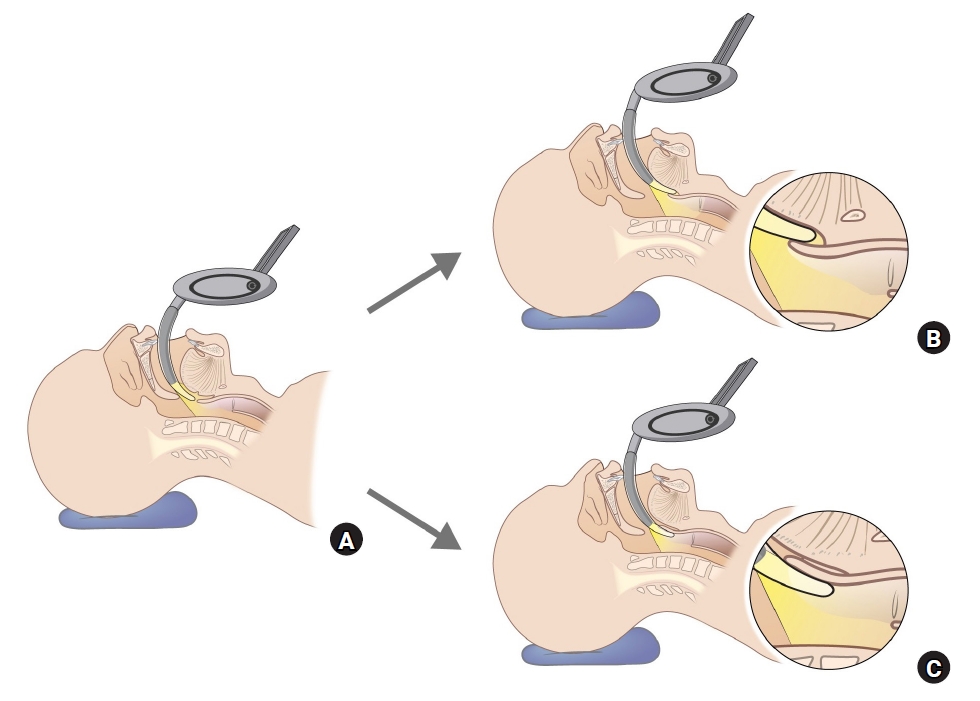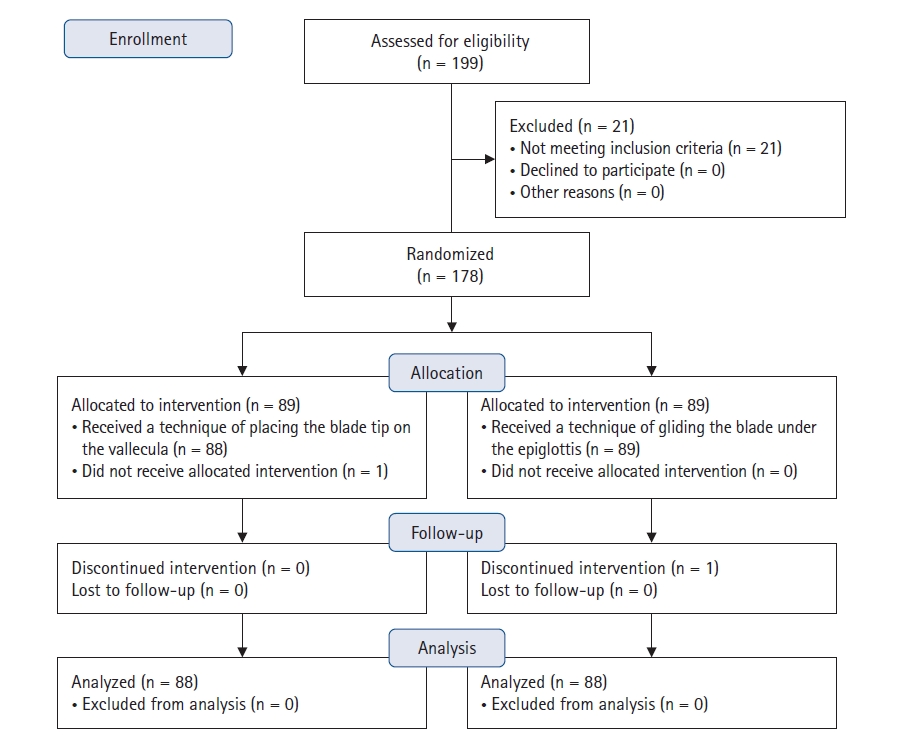2. Nolan JP, Wilson ME. Orotracheal intubation in patients with potential cervical spine injuries. An indication for the gum elastic bougie. Anaesthesia 1993; 48: 630-3.


3. Heath KJ. The effect of laryngoscopy of different cervical spine immobilisation techniques. Anaesthesia 1994; 49: 843-5.


4. Goutcher CM, Lochhead V. Reduction in mouth opening with semi-rigid cervical collars. Br J Anaesth 2005; 95: 344-8.


6. Salem MR, Mathrubhutham M, Bennett EJ. Difficult intubation. N Engl J Med 1976; 295: 879-81.


7. King TA, Adams AP. Failed tracheal intubation. Br J Anaesth 1990; 65: 400-14.


8. Gerling MC, Davis DP, Hamilton RS, Morris GF, Vilke GM, Garfin SR, et al. Effects of cervical spine immobilization technique and laryngoscope blade selection on an unstable cervical spine in a cadaver model of intubation. Ann Emerg Med 2000; 36: 293-300.


9. McElwain J, Malik MA, Harte BH, Flynn NH, Laffey JG. Determination of the optimal stylet strategy for the C-MAC videolaryngoscope. Anaesthesia 2010; 65: 369-78.


10. Bradley WP, Bain C, Mehra R, Symons J. Scoring systems for videolaryngoscopes. Anaesth Intensive Care 2013; 41: 122.

15. Levitan RM, Ochroch EA, Kush S, Shofer FS, Hollander JE. Assessment of airway visualization: validation of the percentage of glottic opening (POGO) scale. Acad Emerg Med 1998; 5: 919-23.


18. Lewis SR, Butler AR, Parker J, Cook TM, Schofield-Robinson OJ, Smith AF. Videolaryngoscopy versus direct laryngoscopy for adult patients requiring tracheal intubation: a cochrane systematic review. Br J Anaesth 2017; 119: 369-83.


19. Br├╝ck S, Trautner H, Wolff A, Hain J, Mols G, Pakos P, et al. Comparison of the C-MAC(
®) and GlideScope(
®) videolaryngoscopes in patients with cervical spine disorders and immobilisation. Anaesthesia 2015; 70: 160-5.


20. Kleine-Brueggeney M, Greif R, Schoettker P, Savoldelli GL, Nabecker S, Theiler LG. Evaluation of six videolaryngoscopes in 720 patients with a simulated difficult airway: a multicentre randomized controlled trial. Br J Anaesth 2016; 116: 670-9.


23. Hung KC, Chang YJ, Chen IW, Lin CM, Liao SW, Chin JC, et al. Comparison of video-stylet and video-laryngoscope for endotracheal intubation in adults with cervical neck immobilisation: a meta-analysis of randomised controlled trials. Anaesth Crit Care Pain Med 2021; 40: 100965.


24. Zhang J, Tan LZ, Toh H, Foo CW, Wijeratne S, Hu H, et al. Comparing the first-attempt tracheal intubation success of the hyperangulated McGrath
® X-blade vs the Macintosh-type CMAC videolaryngoscope in patients with cervical immobilization: a two-centre randomized controlled trial. J Clin Monit Comput 2022; 36: 1139-45.



27. OŌĆÖLeary AM, Sandison MR, Myneni N, Cirilla DJ, Roberts KW, Deane GD. Preliminary evaluation of a novel videolaryngoscope, the McGrath Series 5, in the management of difficult and challenging endotracheal intubation. J Clin Anesth 2008; 20: 320-1.


29. Mayglothling J, Duane TM, Gibbs M, McCunn M, Legome E, Eastman AL, et al. Emergency tracheal intubation immediately following traumatic injury: an Eastern Association for the Surgery of Trauma practice management guideline. J Trauma Acute Care Surg 2012; 73: S333-40.

30. Lennarson PJ, Smith DW, Sawin PD, Todd MM, Sato Y, Traynelis VC. Cervical spinal motion during intubation: efficacy of stabilization maneuvers in the setting of complete segmental instability. J Neurosurg 2001; 94(2 Suppl): 265-70.

31. Byhahn C, Iber T, Zacharowski K, Weber CF, Ruesseler M, Schalk R, et al. Tracheal intubation using the mobile C-MAC video laryngoscope or direct laryngoscopy for patients with a simulated difficult airway. Minerva Anestesiol 2010; 76: 577-83.

33. Bathory I, Frascarolo P, Kern C, Schoettker P. Evaluation of the GlideScope for tracheal intubation in patients with cervical spine immobilisation by a semi-rigid collar. Anaesthesia 2009; 64: 1337-41.


34. Jeon WJ, Shim JH, Cho SY, Baek SJ. Stylet- or forceps-guided tube exchanger to facilitate GlideScope intubation in simulated difficult intubations--a randomised controlled trial. Anaesthesia 2013; 68: 585-90.


35. Ali QE, Das B, Amir SH, Siddiqui OA, Jamil S. Comparison of the Airtraq and McCoy laryngoscopes using a rigid neck collar in patients with simulated difficult laryngoscopy. J Clin Anesth 2014; 26: 199-203.















